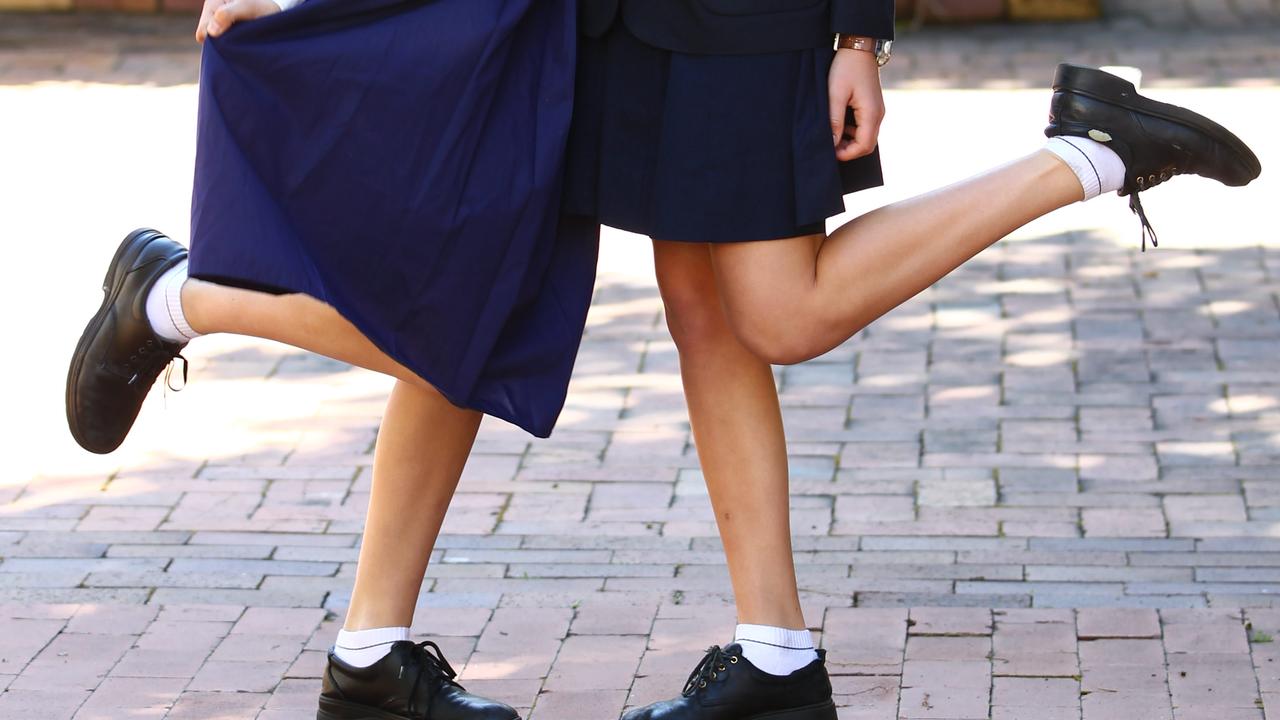School’s ‘formal skirt’ rule holds up against QCAT discrimination case
A Qld high school student has made a discrimination complaint after being forced to wear skirts instead of pants to formal events despite male students being allowed to. VOTE IN OUR POLL

QLD News
Don't miss out on the headlines from QLD News. Followed categories will be added to My News.
A female Queensland high school student who wore pants to school has failed in a discrimination complaint over being forced to wear skirts to formal events.
The family, student and school involved cannot be identified for legal reasons, with the Queensland Civil and Administrative Tribunal issuing an order prohibiting the publication of any identifying details as the female student was aged under 18.
The civil complaint stemmed from the school’s uniform policy requiring female students in Years 7-12 to wear a skirt to formal school occasions, including school ceremonies and events.
However male students could wear shorts or trousers to such occasions, both of which were part of their usual school uniform.
The policy affected the student – who had expressed a clear preference to her father to generally wear trousers at school for comfort and modesty – for about a year before she left the school.
According to QCAT documents, the family argued their daughter was treated less favourably than male students because she suffered a greater financial burden by having to purchase two sets of uniforms, had to take greater care when sitting to ensure the skirt properly covered her, and she would be cold in cooler weather compared to boys in their trousers.
The family further submitted that if their daughter failed to comply with the policy she faced exclusion or suspension, or other consequences not faced by male students, the QCAT decision said.
In response, the school argued that the student could apply for an exemption from the policy and described the allegations as offensive and baseless.
The school further submitted that the policy was consistent with community standards, and that most female students chose to wear skirts for everyday school wear anyway.
According to QCAT documents, the policy only applied to events for about eight hours per year, unless a student was in the school band or selected for other formal occasions.
Other than one type of event, all applicable formal events were seated indoor events and none of them involved physical activity, according to the QCAT decision.
In his decision, QCAT member Jeremy Gordon discarded the financial burden claim because there were alternative methods to obtain a skirt without great expenditure.
“It turned out that the family’s financial circumstances were such that there was no hardship in having to purchase another uniform, and the (student’s) father said in his evidence that the extra cost was not a matter of concern,” Mr Gordon said.
“In any case, such a purchase was not necessary because the school had skirts available on loan for formal school occasions … and a skirt could be a ‘hand me down’ item.”
Regarding the alleged greater risk of exposure when wearing the skirt, Mr Gordon assessed the length of the school’s skirt and other clothing items that could be worn underneath.
“The risk of such exposure is reduced by the length of the skirt – the uniform policy requires the skirt to touch the ground when kneeling, so the skirt is quite long,” he said.
“The (student’s) father accepted in evidence that there was nothing in the uniform policy stopping a female student wearing shorts or bike shorts under the formal uniform skirt, and he accepted that wearing those would solve the modesty issue completely.”
Mr Gordon also accepted the school’s evidence that it would be unlikely that a female student would be sent home from a formal event for not wearing a skirt, and any other potential consequences not faced by male students were just speculation.
Ultimately, Mr Gordon dismissed both the direct and indirect discrimination aspects of the family’s complaint.
“The same policy applied both to male and female students, but within that policy they were treated differently,” he ruled.
“The different effect arises from differences in the policy applying to female and male students.
“This means that it is not possible to identify a term which applied both to female and male students and which requires to be examined under the indirect discrimination provisions of the Anti-Discrimination Act.”
More Coverage
Originally published as School’s ‘formal skirt’ rule holds up against QCAT discrimination case









